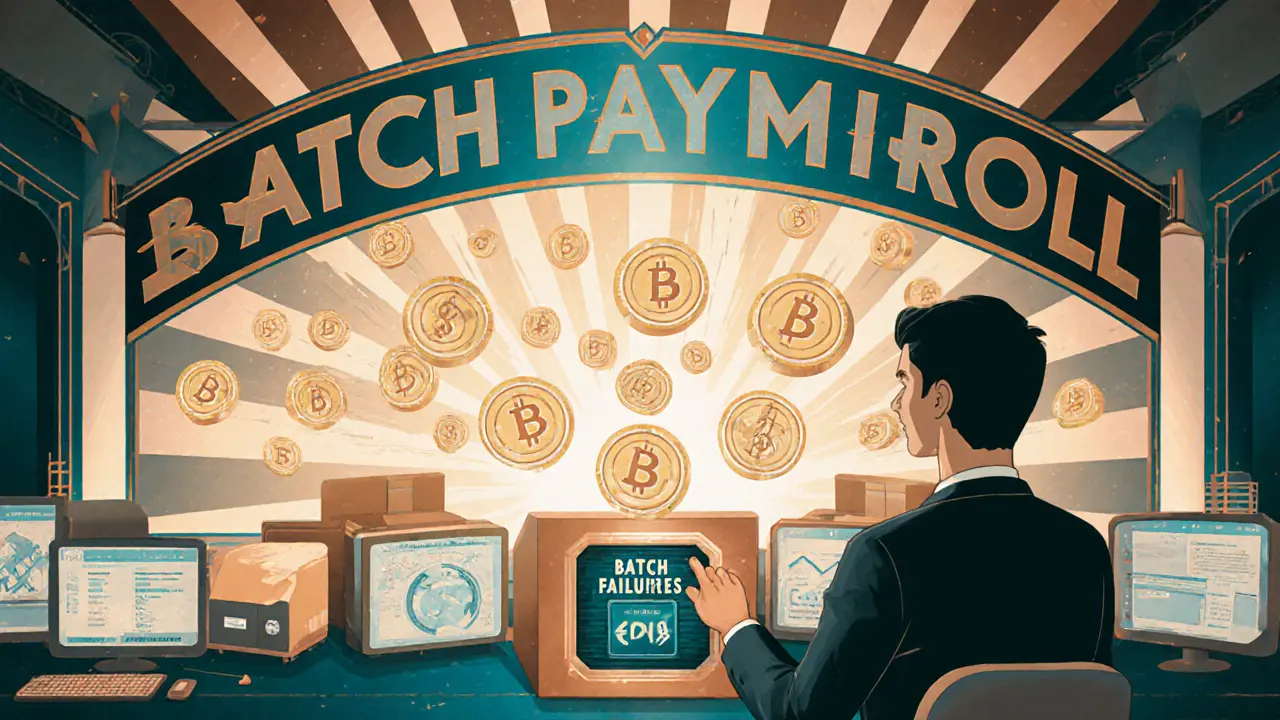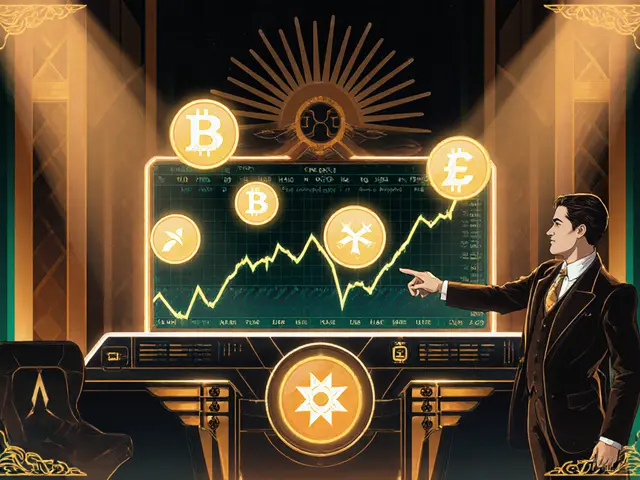Gas Fee Calculator
Calculate Transaction Costs
See how much you'd pay in gas fees versus gasless transactions
Results
Traditional Transaction (with gas fees):
$0.00 in gas fees
Gasless Transaction:
$0.00 in user payment
How this works: With gasless transactions, the app pays the gas fee (typically in ETH) and reimburses itself later with your chosen token (like USDC).
Imagine signing up for a new crypto app, ready to send your first USDC token to a friend. You click "Send," and suddenly you’re asked to buy ETH just to pay a $3 gas fee. You didn’t come here for ETH. You came to use USDC. So you walk away. This happened to 58% of new Web3 users in 2023, according to Nonbank.io’s survey of over 1,200 people. The problem isn’t crypto itself-it’s the friction. And account abstraction is the fix.
What Is Account Abstraction?
Account abstraction flips the script on how Ethereum handles accounts. For years, Ethereum had two types: Externally Owned Accounts (EOAs) and Contract Accounts. EOAs are your regular wallets-controlled by a private key. Contract Accounts can run code but can’t start transactions on their own. They need an EOA to trigger them. That’s why you always need ETH to pay for gas. Account abstraction, through the ERC-4337 standard, lets smart contracts act like your main wallet. Now your wallet isn’t just a key-it’s a programmable account. You can set rules: require two signatures to send money, recover access via a trusted friend, or even pay gas in USDC instead of ETH. This isn’t a minor tweak. It’s a full redesign of user identity on the blockchain.How Gasless Transactions Actually Work
Gasless doesn’t mean free. It means someone else pays the fee-usually the app you’re using. Here’s how it works step by step:- You create a UserOperation-a special data package with your transaction, signature, and which token you want to use for gas.
- This gets sent to a Bundler, a special node that collects hundreds of these operations.
- The Bundler submits them all together to the Entry Point contract on Ethereum.
- That’s where the Paymaster steps in. It checks: Is this user allowed? Is the fee covered? Then it pays the gas in ETH (or WETH) and gets reimbursed in your chosen token-like USDC or DAI.
Why This Matters for Everyday Users
If you’ve ever lost money because you ran out of ETH mid-transaction, or got stuck because your wallet didn’t auto-fill gas fees, you know how broken the old system is. Account abstraction fixes that. - No more ETH hunting: You can pay gas in any ERC-20 token. USDC, MATIC, even DAI-all work. - Recover your wallet without a seed phrase: Set up social recovery. If you lose your phone, a friend can help you reset access. - Less failed transactions: Utila.io found gasless transactions cut failure rates by up to 78%. That’s because the system handles gas estimation automatically. - Batch transactions: Send 10 payments at once. No need to sign each one. Perfect for payroll or rebalancing portfolios. This isn’t just convenient-it’s essential for bringing in non-crypto natives. People don’t want to learn blockchain before they use it. They want to use it like they use Venmo.
Security Trade-Offs: What You’re Giving Up
There’s a catch. Traditional wallets rely on cryptographic security-your private key is your only gatekeeper. Account abstraction shifts that trust to smart contracts. If the Paymaster contract has a bug? Your transaction could be blocked or drained. If the Bundler is malicious? They could reorder or censor your transactions. Trail of Bits warned in 2023 that improperly audited Paymaster contracts are now one of the top five attack vectors in DeFi. And here’s the scary part: you might not even know it’s happening. Unlike a regular wallet where you see every gas fee, gasless systems hide the payment layer. That’s great for UX-but dangerous if you don’t know who’s controlling the money flow. That’s why enterprise users are adopting this faster than retail. Companies can audit the contracts. They can lock down permissions. They can enforce compliance. For individuals? It’s a gamble unless you’re using a trusted wallet like Sequence or Thirdweb.Who’s Using It Right Now?
Adoption is growing fast. DappRadar reported that 43% of new wallets launched in Q2 2023 already support account abstraction-up from just 12% a year earlier. But it’s not evenly spread. - Wallets: Sequence.xyz, Thirdweb, and Argent lead the pack. MetaMask still doesn’t support it natively-but they’ve said they’re working on it. - Apps: DeFi platforms, NFT marketplaces, and gaming apps are the biggest adopters. Why? Because they need users to stay. If you’re selling an NFT and your buyer needs ETH to pay gas, you lose the sale. - Enterprises: Institutional crypto managers use it for batch payments, automated compliance, and multi-sig treasury controls. One firm reduced portfolio rebalancing from 45 minutes to under 7 minutes. The biggest gap? Consistency. As one Reddit user put it: "I paid gas in USDC on App A. App B asked for ETH. Why doesn’t EVERY app work the same?" That’s the real problem-not the tech, but the lack of standards.
What Developers Need to Know
If you’re building a Web3 app, integrating account abstraction isn’t optional anymore-it’s expected. Thirdweb says you can do it in 3-5 business days using their SDK. But it’s not plug-and-play. You need to:- Choose a Paymaster provider or build your own (and audit it thoroughly)
- Decide which tokens you’ll accept for gas payment
- Handle reverts in the UserOperation flow
- Test for gas estimation errors-these cause 38% of all implementation bugs




Emily Unter King
November 5, 2025 AT 21:12Account abstraction is the first time Ethereum has ever treated users like humans instead of nodes. ERC-4337 isn’t just an upgrade-it’s a paradigm shift in identity management. Paymasters abstracting gas payment into arbitrary ERC-20s? That’s not convenience, it’s economic sovereignty redefined. The bundler layer introduces new attack surfaces, yes-but the trade-off is worth it when onboarding conversion jumps from 28% to 67%. This isn’t UX polish. This is infrastructure-level liberation.
Michelle Sedita
November 7, 2025 AT 17:08It’s funny how we treat gas fees like some natural law, when really they’re just a relic of early blockchain design. We didn’t always need private keys to be our only identity. We didn’t always need to carry ETH like a digital toll pass. Account abstraction doesn’t remove friction-it removes the illusion that crypto must be hard to use. The real revolution isn’t in the code. It’s in the psychology of adoption.
Cydney Proctor
November 9, 2025 AT 01:01Oh please. You call this innovation? It’s just a fancy wrapper around centralized custody. You’re telling me you trust some random Paymaster contract with your transaction logic? That’s not Web3-that’s Web2 with a blockchain sticker. And don’t even get me started on the fact that MetaMask still doesn’t support this natively. If the industry’s leading wallet can’t keep up, maybe this isn’t the future-it’s a marketing gimmick.
Cierra Ivery
November 9, 2025 AT 16:49Wait-so you’re saying I don’t need ETH anymore? But what if the Paymaster goes down? What if they freeze my transaction? What if they charge me 10% in USDC to cover their ‘gas’? What if they’re a front for a honeypot? What if I lose my phone and my ‘trusted friend’ is my ex? What if the bundler censors my NFT mint? What if the audit was done by a guy who got paid in Dogecoin? What if-what if-what if-
Veeramani maran
November 10, 2025 AT 06:42bro this is lit!! i just integrated 4337 in my dapp using thirdweb sdk and now users dont even know what gas is!! lol i had so many typos in my paymaster contract at first like 'revert' spelled 'rever' and it broke everything but now its working!! send me ur wallet addy ill send u 0.001 eth for testing!!
Kevin Mann
November 10, 2025 AT 15:43Okay but imagine this: you’re just trying to buy an NFT, you sign, you’re excited, you’re feeling the vibes, you’re ready to post it on your timeline… and then-BAM-your transaction gets reverted because the Paymaster’s gas estimation was off by 0.0000000001 ETH and now you’re sitting there staring at your screen like a ghost in the machine. And then your friend DMs you ‘bro you okay?’ and you just whisper ‘I thought I was free’… and the room goes silent. This isn’t progress. This is emotional labor disguised as innovation. 😭